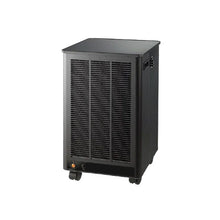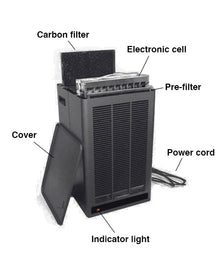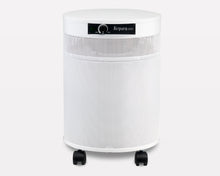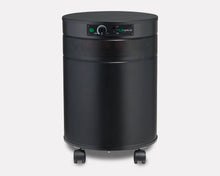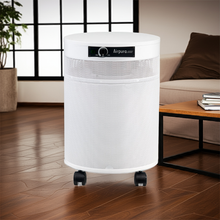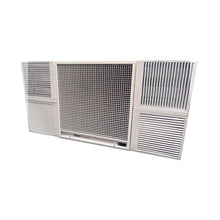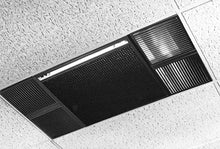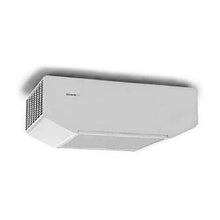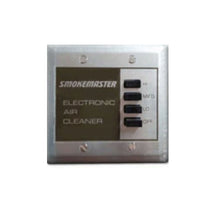The ROI of Clean Air: How Effective Smoke Removal Boosts Customer & Employee Satisfaction

Clean air isn't just a luxury—it's a business imperative that directly impacts your bottom line. While many business owners focus on visible improvements like new furniture or updated décor, the quality of your indoor air environment works behind the scenes to shape customer experiences and employee performance in ways that translate to measurable financial returns.
The connection between air quality and business success runs deeper than most realize. When you improve customer experience clean air becomes a silent ambassador for your brand, while poor air quality can drive customers away before they even recognize why they feel uncomfortable. Similarly, employee productivity air quality relationships have been extensively documented by researchers, revealing that the air your team breathes directly affects their cognitive performance, health, and job satisfaction.
Understanding the benefits of smoke free business operations extends far beyond compliance with regulations. It's about creating an environment where people want to spend time, where employees thrive, and where your investment in air quality management pays dividends through increased customer loyalty, reduced employee turnover, and enhanced operational efficiency.
The Science Behind Air Quality and Human Performance
Research from Harvard's T.H. Chan School of Public Health has demonstrated that "poor indoor air quality affects health and productivity significantly more than we previously understood." This isn't just academic theory—it's quantifiable business impact that affects every aspect of your operations.
The mechanics of how air quality influences human behavior are straightforward yet profound. When people encounter poor air quality, their bodies respond with subtle stress reactions that affect decision-making, comfort levels, and overall satisfaction. Pollutants, smoke particles, and inadequate ventilation create an environment where both customers and employees operate at less than their optimal capacity.
Studies have consistently shown that "poor indoor air quality in buildings can decrease productivity in addition to causing visitors to express dissatisfaction." The performance impact can be substantial, with research indicating productivity decreases of 6-9% in environments with compromised air quality. For businesses, this translates to significant losses in employee output and customer satisfaction scores.
The cognitive effects are particularly striking. When air quality improves, research participants demonstrate enhanced decision-making abilities, better concentration, and improved problem-solving skills. These improvements aren't marginal—they represent meaningful changes in human performance that directly correlate with business outcomes.
What makes this research particularly compelling for business owners is its consistency across different industries and settings. Whether you're running a restaurant, office, retail space, or service business, the fundamental relationship between air quality and human performance remains constant. Clean air creates an environment where people perform better, feel more comfortable, and form positive associations with your business.
Customer Experience: The Clean Air Advantage
Your customers may not consciously notice your air quality when it's good, but they certainly feel its effects. Clean, fresh air creates an unconscious sense of comfort and well-being that enhances every other aspect of their experience. When you successfully improve customer experience clean air becomes an invisible foundation that supports all your other customer service efforts.
Consider the restaurant industry, where atmosphere plays a crucial role in customer satisfaction. Smoke-free environments don't just protect health—they enhance the sensory experience of dining. Customers can fully appreciate food aromas, engage in comfortable conversation without irritation from smoke, and enjoy longer visits that often translate to higher spending per customer.
The psychological impact of clean air on customer behavior is significant. In smoke-free environments, customers report feeling more relaxed, staying longer, and having more positive interactions with staff. These factors combine to create the conditions for increased customer loyalty and positive word-of-mouth recommendations that drive long-term business growth.
Retail businesses experience similar benefits when they prioritize air quality. Customers in clean air environments browse longer, make more considered purchasing decisions, and return more frequently. The comfort factor becomes particularly important in businesses where customers spend extended periods, such as cafes, bookstores, or service establishments where waiting is involved.
The competitive advantage becomes clear when you consider that many businesses still overlook air quality as a customer experience factor. By investing in effective smoke removal and air purification systems, you differentiate your business in ways that customers feel immediately, even if they can't articulate why your establishment feels more welcoming than others.
Customer feedback consistently reflects these improvements. Businesses that have implemented comprehensive air quality improvements report higher satisfaction scores, increased repeat visits, and fewer complaints about environmental comfort. These metrics translate directly to revenue growth and market share expansion.
Employee Productivity: Breathing Life into Performance
The relationship between employee productivity air quality demonstrates one of the clearest returns on investment for air quality improvements. Your team's cognitive performance, health, and job satisfaction all improve measurably when they work in environments with clean, well-circulated air.
Research has documented productivity increases of up to 11% following air quality improvements in workplace environments. To put this in perspective, for a business with $1 million in annual revenue per employee, this productivity gain represents $110,000 in additional value per employee per year. Even conservative estimates suggest that air quality improvements can generate "a $6,500 increase in productivity per employee."
The mechanisms behind these productivity gains are well-understood. Clean air supports better oxygen flow to the brain, reducing fatigue and enhancing cognitive function. Employees in smoke-free environments experience fewer respiratory irritations, headaches, and energy dips throughout the day. This translates to more consistent performance, better decision-making, and higher quality work output.
Absenteeism rates also improve significantly in businesses with superior air quality. Employees experience fewer sick days related to respiratory issues, allergies, and general health problems associated with poor indoor air. The cost savings from reduced absenteeism, combined with productivity gains from healthier employees present at work, creates a compelling financial case for air quality investment.
Employee retention benefits add another layer of return on investment. Teams working in environments with clean air report higher job satisfaction and are less likely to seek employment elsewhere. Given that replacing an employee typically costs 50-200% of their annual salary, retaining staff through environmental improvements provides substantial cost savings.
The benefits extend to employee morale and workplace culture. Teams working in comfortable, healthy environments demonstrate better collaboration, more positive attitudes, and stronger commitment to company goals. These intangible benefits contribute to overall business success in ways that extend far beyond immediate productivity measurements.
The Financial Case: Quantifying Clean Air ROI
When you examine the benefits of smoke free business operations from a purely financial perspective, the numbers build a compelling case for investment. The return on investment for air quality improvements consistently outperforms many traditional business investments, with payback periods often measured in months rather than years.
Direct cost savings begin with reduced cleaning and maintenance expenses. Smoke-free environments require less frequent deep cleaning, experience less wear on furnishings and equipment, and maintain their appearance longer. These operational savings accumulate steadily, reducing ongoing business expenses while maintaining higher aesthetic standards.
Insurance costs often decrease for businesses that implement comprehensive smoke-free policies. Many insurers offer reduced premiums for businesses that demonstrate lower fire risks and healthier environments for employees and customers. These savings continue year after year, providing ongoing return on your air quality investment.
Energy efficiency improvements frequently accompany air quality enhancements. Modern air filtration and ventilation systems often operate more efficiently than older systems, reducing utility costs while improving air quality. The dual benefit of lower energy bills and better air creates immediate positive cash flow from your investment.
Customer spending patterns in smoke-free environments consistently show positive trends. Customers stay longer, make larger purchases, and return more frequently. The increased dwell time in retail environments translates directly to higher sales per customer visit. Restaurants and hospitality businesses often see increased average check sizes and improved table turnover efficiency.
Property values benefit from comprehensive air quality improvements. Commercial properties known for superior indoor environmental quality command higher rents, experience lower vacancy rates, and maintain their value better over time. This creates long-term asset appreciation that adds to the total return on your air quality investment.
The competitive advantage factor becomes particularly valuable in markets where air quality standards vary significantly between businesses. Companies that establish reputations for superior environmental quality often capture market share from competitors who haven't prioritized these improvements.
Implementation Strategies: Building Your Clean Air System
Creating an effective clean air environment requires strategic planning and the right combination of technologies and policies. The most successful approaches integrate multiple solutions that work together to address different aspects of air quality management.
Professional air filtration systems form the foundation of most effective clean air strategies. Modern HEPA filtration technology can remove 99.97% of particles as small as 0.3 microns, effectively eliminating smoke particles, allergens, and other airborne contaminants. These systems work continuously to maintain optimal air quality without requiring constant attention or maintenance.
Ventilation system optimization plays a crucial role in maintaining fresh air circulation. Proper ventilation design ensures that clean air reaches all areas of your business while efficiently removing contaminated air. Professional HVAC assessment can identify opportunities to improve air flow patterns and eliminate dead zones where pollutants might accumulate.
Source control strategies address air quality issues at their origin. Implementing comprehensive smoke-free policies, using low-emission materials and products, and controlling entry points for outdoor pollutants all contribute to maintaining cleaner indoor air. These preventive measures reduce the workload on your filtration systems while improving overall air quality.
Air quality monitoring technology allows you to track and verify the effectiveness of your improvements. Modern sensors can measure particulate matter, volatile organic compounds, and other key indicators of air quality in real-time. This data helps you optimize system performance and demonstrate the value of your air quality investment to employees and customers.
Maintenance protocols ensure that your air quality systems continue operating at peak efficiency. Regular filter changes, system inspections, and performance monitoring prevent degradation of air quality over time. Establishing clear maintenance schedules and working with qualified service providers protects your investment and maintains consistent results.
Staff training components help your team understand and support your clean air initiatives. When employees understand the benefits and requirements of maintaining good air quality, they become partners in protecting the environment you've created. This includes training on policy enforcement, system operation, and recognizing signs that air quality attention may be needed.
Industry-Specific Applications and Benefits
Different industries experience unique advantages from air quality improvements, though the fundamental benefits remain consistent across business types. Understanding how clean air impacts your specific industry helps focus investment decisions and maximize returns.
Restaurant and hospitality businesses see particularly dramatic improvements from smoke removal and air quality enhancement. Dining experiences improve when customers can fully appreciate food aromas without interference from smoke or other odors. Kitchen ventilation improvements protect staff health while maintaining food quality and safety standards. Customer comfort increases lead to longer visits and higher spending per table.
Office environments benefit extensively from employee productivity air quality improvements. Knowledge workers performing complex cognitive tasks show significant performance gains in clean air environments. Meeting rooms with superior air quality facilitate better decision-making and more productive collaboration. Employee satisfaction and retention improve, reducing recruitment and training costs.
Retail businesses find that clean air environments encourage browsing and increase purchase likelihood. Customers spend more time in comfortable environments, leading to higher sales conversion rates. Product presentation benefits when air quality prevents dust accumulation and odor interference. Staff performance improves, leading to better customer service and sales outcomes.
Healthcare and wellness businesses must maintain superior air quality for both regulatory compliance and customer confidence. Clients expect clean, healthy environments when seeking health-related services. Professional credibility increases when businesses demonstrate commitment to environmental health. Staff health protection becomes particularly important in healthcare settings.
Manufacturing and industrial applications benefit from air quality improvements through worker safety, productivity, and product quality enhancements. Clean air environments reduce health risks for employees while improving concentration and performance. Product quality can improve when airborne contaminants are controlled effectively.
Educational and childcare facilities experience benefits through improved learning environments and health protection for vulnerable populations. Students and children perform better in clean air environments, while staff health and satisfaction improve. Parent confidence increases when facilities demonstrate commitment to environmental health.
Measuring Success: Tracking Your Clean Air Investment
Establishing clear metrics for measuring the success of your air quality improvements helps justify the investment and guide ongoing optimization efforts. The most effective measurement approaches combine quantitative data with qualitative feedback to provide a comprehensive view of your return on investment.
Customer satisfaction metrics often show immediate improvement following air quality enhancements. Survey scores, online reviews, and direct feedback frequently mention comfort and environmental quality improvements. Customer retention rates typically increase, while complaints related to environmental discomfort decrease significantly.
Employee performance indicators provide clear evidence of productivity improvements. Absenteeism rates often decline within weeks of air quality improvements. Performance reviews and productivity measurements frequently show positive trends. Employee satisfaction surveys consistently reflect improvements in workplace comfort and health perceptions.
Financial metrics demonstrate the quantitative return on your air quality investment. Revenue per customer often increases in cleaner environments. Operating costs may decrease through reduced cleaning and maintenance requirements. Insurance premiums might decline, and property values often appreciate.
Health and safety indicators show the protective benefits of clean air environments. Workers' compensation claims related to respiratory issues typically decrease. Sick leave usage often declines. Overall health insurance costs for employees may show favorable trends over time.
Air quality measurements provide objective data about environmental improvements. Particulate matter levels, volatile organic compound concentrations, and other air quality indicators can be tracked continuously. This data helps optimize system performance and demonstrates the effectiveness of your improvements to stakeholders.
Operational efficiency metrics often improve following air quality enhancements. Equipment maintenance requirements may decrease in cleaner environments. Energy efficiency can improve with modern air quality systems. Staff productivity measurements typically show positive trends that contribute to overall business performance.
Looking Forward: The Future of Business Air Quality
The growing awareness of indoor air quality's impact on human health and performance suggests that businesses prioritizing clean air will enjoy increasing competitive advantages. Consumer expectations continue to rise, and employees increasingly consider environmental quality when making job decisions.
Regulatory trends indicate that air quality standards may become more stringent over time. Businesses that proactively address air quality issues position themselves ahead of potential regulatory requirements while avoiding the costs and disruptions of reactive compliance efforts.
Technology advances continue to make air quality improvements more effective and affordable. Smart sensors, advanced filtration materials, and integrated building management systems provide opportunities for more sophisticated and efficient air quality management.
Consumer health consciousness continues to drive demand for healthier business environments. Companies that establish reputations for superior air quality often find this becomes a significant factor in customer choice and loyalty decisions.
The benefits of smoke free business operations and comprehensive air quality management represent more than just operational improvements—they create fundamental competitive advantages that grow stronger over time. As more research documents the connections between environmental quality and human performance, businesses that have already made these investments will be positioned to capture the benefits of increased consumer and employee awareness.
Conclusion: Clean Air as Strategic Investment
The evidence overwhelmingly supports treating air quality as a strategic business investment rather than merely an operational expense. When you improve customer experience clean air becomes a differentiating factor that influences purchasing decisions, customer loyalty, and word-of-mouth recommendations. The employee productivity air quality relationship delivers measurable returns through increased output, reduced absenteeism, and improved retention rates.
The benefits of smoke free business operations extend far beyond regulatory compliance to encompass customer comfort, employee health, operational efficiency, and competitive positioning. The financial returns from air quality investments consistently exceed those of many traditional business improvements, with payback periods often measured in months rather than years.
Your commitment to clean air sends a clear message to customers and employees that you prioritize their health and comfort. This commitment translates into business results through increased customer satisfaction, improved employee performance, and enhanced reputation in your market.
The time to act on air quality improvements is now, while you can capture first-mover advantages in your market and begin accumulating the compound benefits of cleaner air. The investment in professional air quality solutions pays dividends immediately through improved customer and employee experiences, while building long-term competitive advantages that grow stronger over time.
Clean air isn't just about meeting standards or checking compliance boxes—it's about creating environments where people thrive, businesses prosper, and success becomes sustainable. The return on investment in clean air quality speaks for itself through improved bottom-line results and enhanced business performance across every meaningful metric.

